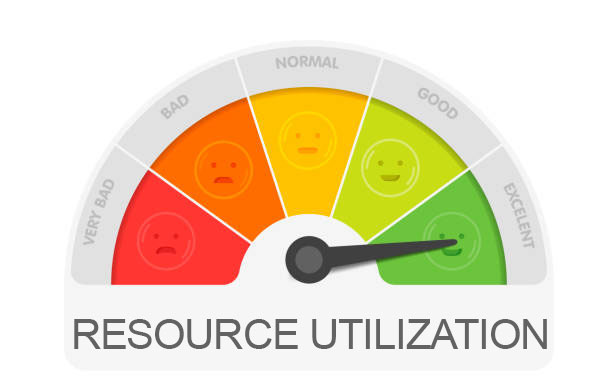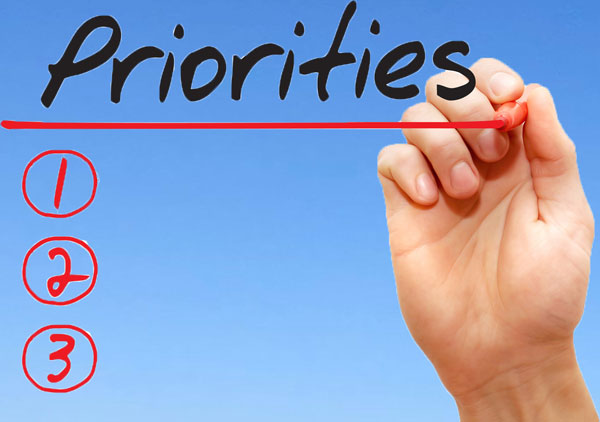
How Resource Management Influences Corporate Culture: Achieving a High-Performing Culture
Achieving a “High-Performing” Culture
The following are a few of my thoughts on what resource management in the business world for achieving a “high-performing” culture is — and is not — but first some context.
During the last 25 years, I’ve been a member of three organizations that were comprised of high-performing cultures:
- 21+ years in the United States Marines;
- ~3 years at a Big Four consulting firm; and
- ~6 months at a boutique entrepreneurial software implementation firm.
A high-performing culture is not one that prioritizes efficiency and meeting client demands over its employees’ wellbeing, and resource management is a vital part of achieving a sustainable high-performing culture.

Utilization Goals and Monitoring Progress
Establishing utilization goals and monitoring progress toward goals is without a doubt an important and necessary business function; however, utilization is only one of many considerations in resource management.
Organizations must remain diligent in remembering that utilization and charged hours data represents real people with families and personal lives. High performing employees are those who have time to plan for activities, are well trained, well rested, and enjoy their work. When an organization prioritizes utilization objectives and meeting client demands over work-life balance for its resources, the result is the creation of a toxic culture that increases turnover with subsequent organizational inefficiency.
The tangible and intangible costs to recruit, interview, onboard, and train a new employee to replace one who left because they were burnt out is an extremely costly expense. Resource management teams must drive utilization; but to combat high turnover due burnout, the team must remember that the “resources” are real people with lives.
A Resource Management Team that advocates for the establishment of realistic utilization goals, takes action on over/under utilization, and advocates for personnel, also drives the organization’s high performing culture. An organization that establishes well-thought-through utilization goals, is capable of flexible application of these goals, and pushes employees to a healthy level, is one that will achieve optimal utilization that facilitates a high performing culture.

Capacity Planning
Oversold? This is why capacity planning is a MUST for high-performing cultures. Every organization that I’ve been a member of (including the military) has oversold its capacity at one point or another. When an organization oversells its capacity, leadership must decide on the next step – push employees harder to meet client demands, or have difficult conversations with clients about meeting expectations.
Resource Management Teams in larger organizations often have less input into capacity planning as the number of available resources across the entire organization is larger than their population. While additional support from another part of the organization can be helpful, this capacity planning approach can quickly lead to a toxic situation in which the organization is oversold, and driving its resources harder to meet client demands. The result can be a toxic culture.
They must be careful not to contribute to creating a toxic culture by pushing resources too hard because they’re often the intermediaries between leadership and employees. It is easy to fall into the utilization traps (mentioned above) when under pressure to fill staffing needs. To combat this, Resource Management Teams must be more personable and really know their assigned resources (this means smaller population sizes).
Regular Communication
On the flipside, Resource Management Teams in smaller organizations have more opportunity to prevent overselling and contributing to a toxic culture through capacity planning and regular communication with the sales and recruiting departments of the organization. In terms of capacity planning, it’s important to remember that the job of the Resource Management Team is not just to allocate appropriate resources to projects.
Another significant responsibility of the Resource Management Team is to advocate for its resources. When a Resource Management Team and an organization utilize capacity planning appropriately, and take a genuine interest in the well-being of their employees, the organizations employees are better cared for resulting in higher morale, less turnover and a higher performing culture.

Organizational Priorities
Every organization seeks the optimal balance between meeting client demands and employee well-being; understanding this is extremely challenging.
I’d like to take a moment to highlight the importance of appropriately prioritizing personnel. I’m a firm believer that we should support employees’ personal goals in the workforce. This means both personal and professional development goals as it relates to the performance in their profession. An employee does not have to work 55+ hours per week to be a “high performer.”
Similarly, we get into dangerous territory when we start comparing one employee’s utilization and charged hours to that of another when attempting to meet client demands when a project is oversold. This approach can contribute to a toxic culture often driving employees harder than desired resulting in burnout and turnover.
If leadership and the Resource Management Team prioritizes, or misbalances, client demands over employee wellbeing for too long, the short-term result may be that client demands are met, but the long-term result will be a toxic culture with a workforce full of over-worked, burned-out resources and high turnover.
To achieve a sustainable high performing culture, an organization must have a healthy balance between meeting client demands and supporting employee work-life balance. The Resource Management Team’s role in establishing organizational priorities is to have the pulse of the people, advocate for them when necessary, and understand how hard resources can be pushed, when necessary.
I have witnessed large and small organizations manage utilization, oversold situations and organizational priorities in a number of different ways. While I fully understand the need for profitability, the vital importance of meeting client demands, and the importance of efficiency in business, we must remember our number one “resource” is our people.
Our people are what make us successful; it is not necessary to work them 55+ hours per week to get high performance and profitability. Supporting people with emotionally intelligent organizational priorities, planning and communication across business functions, and work-life balance, results in employees supporting organizational goals and leadership as well as achieving a high-performing corporate culture.
MHI Culture
At Myers-Holum, we put very high expectations on our consultants to ensure excellent client relations and on-time delivery. It is always a balancing act. That being said, our corporate culture values collaboration, knowledge-sharing and supporting each other to achieve the best results – making for a high-performing culture.




